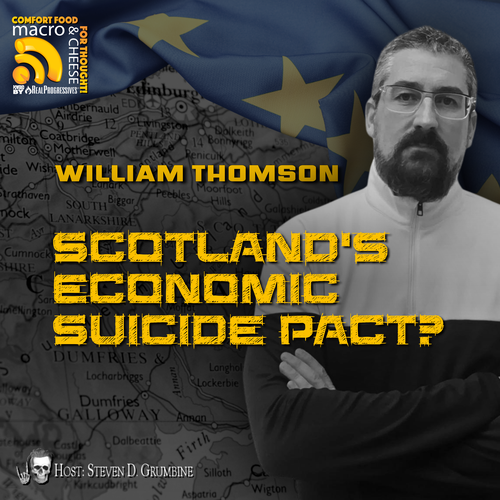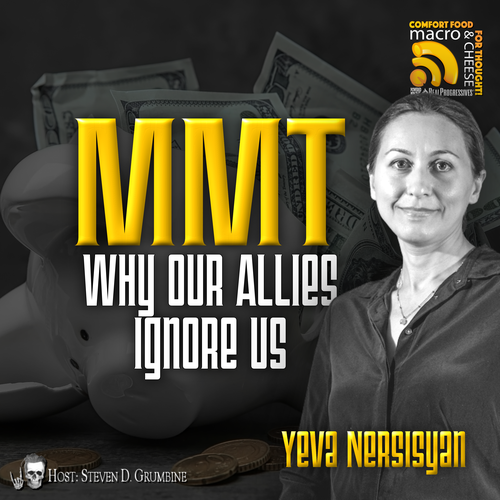Discussions of inflation are often laden with an air of superstition and moral panic. Like all such things they can only persist in the face of misunderstanding and rumor. One of the most common and most important pieces of economic misinformation is the old “quantity theory” of money: The notion that if you create more of the stuff it is worth less, and therefore government deficits (which create money) cause inflation. In point of fact this hasn’t been true since the 1970s when we went off the gold standard. An easy Google search will disprove this with a “water is wet” sort of clarity. Japan, for example, has run deficits for the last 20 years and its national debt is 266% of GDP yet the Yen deflated .02% last year and its rate of inflation has been ludicrously low for well over 20 years. Japan’s currency, like ours, isn’t pegged to anything. Deficits are simply how money gets into the world and taxation is how it is taken out. National debt is simply the sum total of all the money put into the world. That information sounds meaningless because it is. Making sense of it requires understanding that it is not the amount of money that matters, but “stocks and flows” – how it is allocated and where it is going.
The “national debt”, also known as the money supply, is not simply a singular pile of cash circulating in the economy between buyers and sellers. Significant portions of it at any given time lay effectively inert to serve as stores of value. For the most part this portion does not circulate but satisfies what economists call the “wealth demand” for money. For example, over $6.4 trillion is held by the US government as “intragovernmental holdings” for things like the Social Security and Medicare trust funds. Foreign countries hold roughly $7 trillion, much of that in the form of Treasury securities which amount to savings accounts with the Treasury. The top foreign holder is the aforementioned Japan with $1.6 trillion. State and local governments, all users of currency rather than issuers, also have stores of cash and Treasurys. Mutual funds, private pension funds, insurance companies and banks also keep money and securities as a store of value. This money is generally not circulating in the economy in ways that might chase after scarce goods and bid up prices. In fact, the overwhelming majority of the total supply isn’t moving around the economy at all.
The circulating money or what most people think of as the “monetary base” satisfies what economists call the “transactional demand for money”. That includes $2.2 trillion in circulating currency and $4.1 trillion in banking reserves. It’s not a hard and fast limit, since portions of the wealth supply can easily be converted to mobile cash. And it doesn’t tell you where it’s going. The Federal Reserve does have a crude measure of transactional demand called the “velocity of money”, but as can be clearly seen it doesn’t seem to track all that well with inflation. None of these measures do. Not the money supply, not the most liquid parts of the money supply, not the mobility of that money. Money is “supply inelastic” meaning demand and/or price doesn’t change with the supply. As long as you don’t peg its value to a fixed quantity commodity such as a specific amount of gold, creating more of it doesn’t have much impact on its value. But that brings us to another myth about the transactional demand frequently promoted by prominent public facing economists like Larry Summers: the notion that allowing more money into the hands of lower and middle income people causes demand to “run hot” and increases inflation.
It seems to be apparent on its face that when a huge chunk of the population lives paycheck to paycheck and 50% of Americans cannot afford a $400 emergency expense, the lower and middle class is more likely to actually spend what they get on additional goods and services, but there are serious problems with that assumption. There are other ways besides taxation that money is siphoned away from the pool of cash many of these people and households can spend into the economy. Rent, mortgages, student loan repayments, utility bills, car notes, health insurance premiums and other recurring monthly expenses remove money from the real economy of goods and services and send them either to service wealth demand or higher level financial transactional demand. The majority of people who received the latest pandemic stimulus check, for example, indicate they spent it on monthly bills and expenses with any discretionary funds being used to pay down debts. Traditional economic models carry simplistic and inaccurate assumptions about human behavior, such as the notion that people (particularly at the lower margins) will buy more things when they have more money. Behavioral economists and psychologists who study the effects of prolonged scarcity on decision making suggest that is not necessarily the case. Scarcity triggers loss aversion and hoarding behavior, and if people think that income is the thing that is likely to be scarce in the near future then money is what they will hoard.
The rational conclusion is that we’re looking for causes of inflation in all the wrong places. Wages, benefits, access to services, gainful employment, and credit have been kept down for the majority of the working population for no good reason at all. The problem is not on the labor and consumer demand side. The problem is on the capital and supply side. As economist Isabella Weber pointed out in a recent column in The Guardian, there is a long history of corporations exploiting supply bottlenecks as camouflage for price gouging and reaping windfall profits. Antitrust expert Matthew Stoller points out that this does indeed appear to be happening now in conjunction with monopoly pricing power which allows them to increase prices far in excess of costs and seems to account for a substantial portion of current inflation. CEOs are even bragging about it at shareholder meetings. The additional problem from monopolies is that the consolidation and standardization of supply chains have essentially put all supply eggs in a fistful of standardized and increasingly fragile baskets in the name of “efficiency”. As antitrust expert David Dayen points out, this concentration has deliberately removed the necessary flexibility to handle any disruptions and alternative options have been intentionally foreclosed, all in the name of pinching pennies. We are all now paying for that in pounds. One doesn’t have to channel surf for long to find some “expert” on television asserting that the increase in consumer spending over and above pre-pandemic levels is a sign of excess demand. But spending and demand are not the same thing. Spending is up because prices are, not because of any real change in demand over pre-pandemic levels. The insinuation that this is a demand driven problem is a red herring, and a particularly malodorous one at that.
To recap, the majority of the money supply sits in places where it satisfies a desire for stockpiles of wealth, and doesn’t have any impact on demand. The majority of government spending, including the CARES act, went to businesses and institutions and never made it to ordinary people. The money that actually did go to people was largely siphoned upward into those wealth stockpiles before it could have much impact on demand. Increasingly monopolistic corporations extract still more by using supply problems as cover to increase prices above and beyond any costs they incurred from the problems they themselves created. All of this helps to explain why the vast majority of the populace is groaning under the burden of higher prices while the wealthiest people and corporations have seen their own holdings grow substantially.
It’s time to let go of moral panics about debts and deficits and direct attention where it should be: at the people scamming us. In books like Christopher Shaw’s “Money, Power And The People”, the history of the US shows us that when people get informed about economics and finance and challenge the grift, great things are possible. The best weapon against mountebanks and charlatans in powerful positions is a populace who knows too much to be scammed and won’t be distracted from demanding an accounting. Pun definitely intended.










Thanks for the great article and particularly for the cite to the Shaw book… one of my favorites.
Thank you! That book filled me with tremendous hope and optimism. Suddenly real change doesn’t seem so far out of reach anymore. Everyone should read it. And follow the author on twitter.
It’s not a hard and fast limit, since portions of the wealth supply can easily be converted to mobile cash
Any sale of a treasury asset requires someone else to hold it. Apart from the FED buying, it does not created net mobile cash. With the FED buying, it converts to excess reserves that again cannot be termed mobile cash.
Excellent article. Sharing. Good links, will keep me busy. A good case for fiscal policy (Congress) over monetary policy (Fed).
Thank you!
An excellent essay. Short, concise, and written in a language common to everyone. The last paragraph exemplifies the hope of all who are sharing what is described by Modern Monetary Theory.